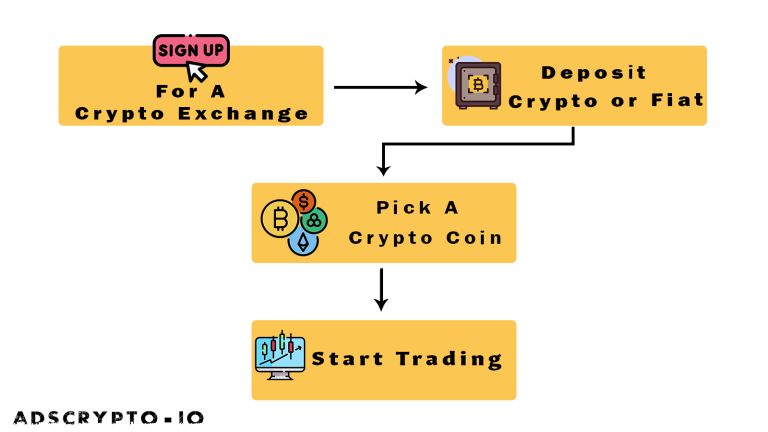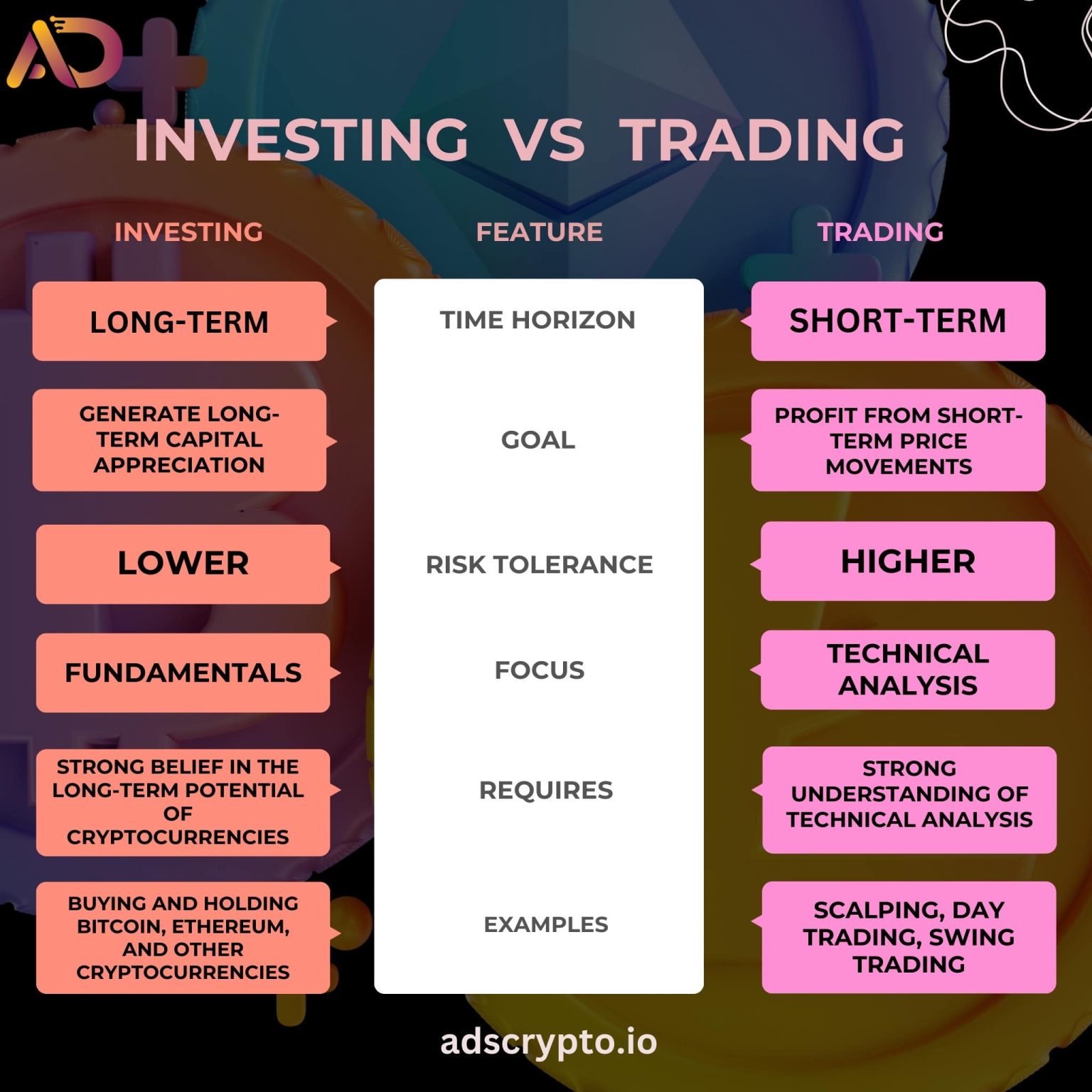
The world of cryptocurrencies has taken the financial industry by storm. With the rise of blockchain technology, the crypto market has become a global phenomenon that attracts both seasoned investors and newcomers alike. In this section, we will explore the crypto market and delve into the exciting world of crypto trading. Whether you are a beginner looking to dip your toes into this digital landscape or someone seeking to expand their knowledge on cryptocurrency trading, we will provide you with a step-by-step guide on navigating this dynamic market successfully. So let’s dive in and discover how you can confidently trade cryptocurrencies!
What Is The Crypto Market?
The crypto market has become a buzzword in recent years, captivating the attention of investors and enthusiasts alike. But what exactly is the crypto market? In simple terms, it refers to the world of cryptocurrencies and digital assets. Where cryptocurrencies are bought, sold, and exchanged. It includes various cryptocurrency exchanges where users can trade digital currencies. The crypto market offers a wide range of investment opportunities for those willing to explore this new frontier. From well-known cryptocurrencies like Bitcoin and Ethereum to emerging altcoins, there is no shortage of options for investors looking to diversify their portfolios.
One of the key advantages of the crypto market is its potential for high returns. Many early adopters have seen significant gains as the value of certain cryptocurrencies skyrocketed over time. However, it’s important to note that investing in cryptocurrencies also carries risks due to their volatility and regulatory uncertainties
What Is Crypto Trading?
Crypto trading involves buying and selling cryptocurrencies with the goal of making a profit. Traders can speculate on the price movements of cryptocurrencies, aiming to buy low and sell high. This type of trading operates on cryptocurrency exchanges and can be done in various ways, including spot trading, derivatives trading, and margin trading.
Get Started Trading Cryptocurrencies.
Welcome to the world of cryptocurrency trading! Whether you’re a beginner or crypto enthusiast looking to explore this exciting and fast-paced market or someone with years of trading experience, this blog is here to provide valuable insights and tips. Cryptocurrency trading has gained immense popularity over the years, offering opportunities for both financial growth and technological innovation. So we will dive into the step of crypto trading, that can help you navigate this ever-evolving landscape. So, whether you’re curious about the basics or seeking trading techniques, join us on this journey as we unravel the world of cryptocurrency trading.
Steps For Cryptocurrency Trading.

Sign Up For A Cryptocurrency Exchange.
Choose a reliable cryptocurrency exchange platform and visit their website. Look for the option to sign up or create an account. Provide the required information, such as your name, email address, and a strong password. Some exchanges may require additional verification steps, such as identity verification before you can start trading.
Pick A Crypto To Invest In.
Pick a cryptocurrency to invest in: Conduct research on different cryptocurrencies to find the one that aligns with your investment goals and risk tolerance. Consider factors such as the project’s technology, use case, team, market demand, and potential for growth. Familiarize yourself with the coin’s price history and market trends. You can also seek advice from experts or read reputable sources to gather insights.
Start Trading
Once you have signed up for an exchange and chosen a cryptocurrency to invest in, you can begin trading. Deposit funds into your exchange account using the available funding methods. Select the trading pair for the cryptocurrency you want to trade, such as BTC/ETH or LTC/BTC. Set your desired parameters, including the trade type (market or limit order) and the amount you want to trade. Double-check the details and execute the trade. Monitor the performance of your investment, stay informed about market news and trends, and manage your trades according to your investment strategy.
Remember to consider the risks associated with cryptocurrency trading and make informed decisions. It’s advisable to start with a small investment, diversify your portfolio, and continually educate yourself about the crypto market with Adscrypto.
What is Crypto Exchange And Their Types
In the world of cryptocurrencies, a crypto exchange plays a pivotal role in facilitating the buying and selling of digital assets. It serves as a platform where users can trade their cryptocurrencies for other digital currencies or traditional fiat currencies. Understanding the concept of crypto exchanges and their different types is crucial for anyone looking to venture into the exciting realm of cryptocurrency trading.
There are several types of crypto exchanges, Each type offers its own set of features, advantages, and considerations that cater to different user preferences and requirements.
Centralized Exchanges: These are traditional exchanges where transactions are facilitated by a third party. Examples of centralized exchanges include Binance, Coinbase, and Kraken.
Decentralized Exchanges (DEX): DEX platforms operate on decentralized networks, allowing users to trade directly with each other without the need for an intermediary. Ethereum-based DEXs like Uniswap, SushiSwap, and PancakeSwap are popular examples.
Peer-to-Peer Exchanges: These exchanges directly connect buyers and sellers, enabling them to trade cryptocurrencies directly. LocalBitcoins and Paxful are commonly used peer-to-peer platforms.
Derivatives Exchanges: Derivatives exchanges offer trading of cryptocurrency-based financial products such as futures contracts and options. Examples include BitMEX, Bybit, and OKEx.
Fiat-to-Crypto Exchanges: These platforms allow users to buy cryptocurrencies using traditional fiat currencies like USD, EUR, or GBP. Coinbase, Kraken, and Bitstamp are popular fiat-to-crypto exchanges.
Understanding these different types of crypto exchanges allows individuals to choose a platform that aligns with their specific needs regarding security, privacy, liquidity requirements, and ease of use.
Styles Of Crypto Trading
When it comes to crypto trading, there are various styles that traders can adopt based on their goals and preferences. Understanding these different styles can help traders make informed decisions and maximize their potential profits. There are several styles of crypto trading that traders adopt based on their preferences, time commitment, and risk tolerance. Here are a few common styles of crypto trading:
Day Trading: Day traders execute multiple trades within a single day, taking advantage of short-term price fluctuations. They closely monitor the market and use technical analysis to make quick decisions. Day trading requires active involvement and monitoring throughout the trading day.
Swing Trading: Swing traders aim to capture larger price movements over a span of days or weeks. They analyze trends and market cycles, looking for opportunities to enter and exit positions. which involves holding positions for a longer period of time compared to day traders. Swing traders aim to capture larger price movements over days or weeks by analyzing both technical indicators and fundamental factors.
Scalping: For those looking for quick profits in the crypto market, scalping may be an appealing style. Scalpers aim to profit from small price changes by executing numerous trades within a short time frame. This requires quick decision-making skills and access to real-time market data. Scalping requires careful analysis and swift decision-making.
Long-Term Investor Trading: Long-Term Investor or Position traders take a long-term approach and hold their positions for an extended period, spanning weeks, months, or even years. They rely on fundamental analysis, market trends, and a deep understanding of the underlying cryptocurrency project to make informed investment decisions.
Automated Trading: Some traders use algorithms and automated trading systems to execute trades. These systems can analyze market data, identify trading opportunities, and automatically place trades based on predefined parameters and strategies.
Choosing the right trading style depends on individual preferences, risk tolerance, and investment goals. It’s important for crypto traders to understand these different styles in order to develop a strategy that aligns with their objectives in the dynamic world of cryptocurrency trading.
Best Crypto Trading Platform
When it comes to crypto trading, having the right platform is crucial for success. There are two main types of platforms to consider: centralized and decentralized. Each type has its own advantages and disadvantages, catering to different needs and preferences of traders.
Centralized Crypto Trading Platforms
Binance: is one of the largest centralized exchanges and offers a wide range of cryptocurrencies for trading, along with features like spot trading, futures trading, margin trading, staking, and more. For Trading Join Now.
Coinbase Pro: provides a user-friendly platform with advanced trading tools. It supports numerous cryptocurrencies and offers features like limit orders, stop orders, and market orders.
Kraken: is known for its robust security measures and offers various trading pairs, including fiat-to-crypto trading options. It also provides advanced trading features and margin trading
Decentralized Crypto Trading Platforms (DEX)
Uniswap: Uniswap is a popular decentralized exchange built on the Ethereum blockchain. It allows users to trade ERC-20 tokens directly from their wallets and provides liquidity through automated market-making.
PancakeSwap: PancakeSwap is a DEX built on the Binance Smart Chain (BSC). It offers swapping of BEP-20 tokens and allows users to stake their tokens to earn rewards.
SushiSwap: SushiSwap is another decentralized exchange running on Ethereum that enables users to trade ERC-20 tokens. It also provides yield farming and staking opportunities.
Both centralized and decentralized platforms have their own merits depending on individual preferences such as security, liquidity options, user experience, fees structure, etc. It is essential for traders to evaluate their specific needs before choosing the most suitable crypto trading platform for their investment journey.
Advantages Of Trading Cryptocurrencies
Cryptocurrencies have gained significant popularity in recent years as a form of digital currency. Trading cryptocurrencies offers several advantages that make it an appealing option for investors and traders alike. cryptocurrencies offer several advantages.Let’s embark on it.
Potential for High Returns: Cryptocurrencies have witnessed significant price volatility, creating opportunities for traders to make substantial profits. The price fluctuations can be more pronounced compared to traditional financial markets, providing the potential for high returns on successful trades.
Accessibility: Cryptocurrency trading is accessible to anyone with an internet connection. You can trade cryptocurrencies 24/7, unlike traditional markets that have specified trading hours. This accessibility allows individuals from all over the world to participate in the crypto market.
Decentralization: Cryptocurrencies operate on decentralized networks, which means they are not controlled by any central authority like banks or governments. This aspect appeals to users who value freedom, privacy, and autonomy in their financial transactions.
Diversification: Cryptocurrencies provide an opportunity to diversify investment portfolios beyond traditional asset classes like stocks and bonds. By adding cryptocurrencies to a portfolio, traders can potentially reduce risk through diversification across different market segments.
Innovation and Technology: Cryptocurrencies operate on blockchain technology, which has the potential to revolutionize various industries. Engaging in cryptocurrency trading allows individuals to be a part of this technological innovation and stay up-to-date with the latest developments in blockchain and decentralized finance.
It’s important to note that while trading cryptocurrencies can be lucrative, it’s also associated with risks. The crypto market’s volatility and lack of regulation can lead to substantial losses if proper risk management strategies are not employed. It’s advisable to conduct thorough research, understand the risks involved, and seek advice from financial professionals before starting crypto trading activities.
Differences Between Investing vs Trading Crypto
Investing and trading are two distinct approaches to engaging in the cryptocurrency market, each with its own set of strategies, time horizons, and objectives. Here are the key differences between investing and trading in the context of cryptocurrencies:
The terms “investing” and “trading” are often used interchangeably in the context of cryptocurrencies, but there are some key differences between the two.
Investing in crypto is a long-term strategy that involves buying and holding cryptocurrencies with the expectation that they will appreciate in value over time. Investors typically have a strong belief in the long-term potential of cryptocurrencies and are willing to ride out short-term fluctuations in the market.
Trading crypto is a short-term strategy that involves buying and selling cryptocurrencies to profit from short-term price movements. Traders typically use technical analysis and other tools to identify potential trading opportunities and aim to make quick profits.

the distinction between cryptocurrency investors and traders lies in their respective goals, analysis methods, time horizons, and transactional frequencies. Investors pursue long-term capital appreciation through fundamental analysis and a passive approach, navigating market fluctuations with enduring vision. Traders, on the other hand, actively engage with short-term market dynamics, leveraging technical analysis and frequent transactions to capitalize on immediate profit opportunities. This duality contributes to the dynamic and diverse nature of the cryptocurrency market, accommodating participants with varying preferences and strategies. Ultimately, the choice between investing and trading reflects individual risk preferences and financial objectives within the rapidly evolving realm of digital assets.
Bottom Line
In this article provides information on cryptocurrency trading, from how to sign up for an account to how to trade them. Although crypto trading involves taking risks in a market that is very volatile, making judgments based on information and following appropriate standards might make a difference. There are many different trading techniques, which is why it is essential to make sure they are aligned with your risk tolerance and financial objectives. confidently seize the opportunity before you. For more information about trading insight and tips follow Adscrypto.





